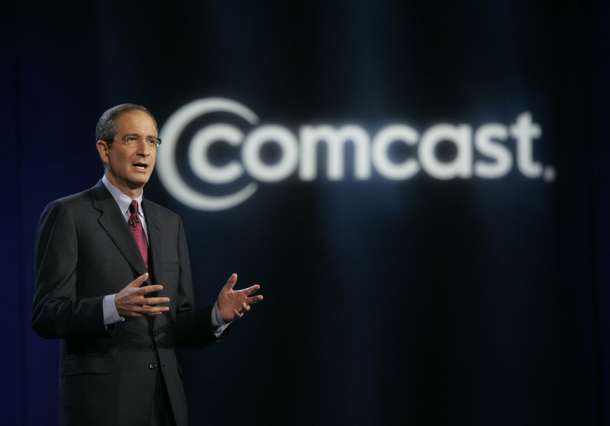As has been widely reported today, Comcast has proposed a $45.2 billion takeover of Time Warner Cable Inc., a merger of the number one and number four video service providers (DirecTV and Dish are numbers two and three). The consumer benefits are abundant, which the business proposal will demonstrate even under regulatory review, so that consumers can start enjoying the benefits as quickly as possible.
Faster broadband service will more quickly roll out to the eight million consumers that Comcast will be earning. Comcast has increased its broadband speeds essentially annually for well more than a decade, including being an industry leader in introducing DOCSIS 3.0, a significant boost to broadband speed. The FCC has noted that Comcast’s broadband speeds are consistently higher than those at Time Warner Cable.
How is it that a “cable” company is advancing so rapidly? Cable companies are increasingly “tech” companies and Comcast more so than any. Most of the work of cable companies is now being done in the cloud, not in trenches through the earth. Comcast’s Brian Roberts has remarked, “That’s how you build a software company. In fact I think we would describe ourselves more as a technology and innovation company . . . “
The new product offerings by Comcast, and those in the pipeline, make clear that his assertion is more than just wishful thinking, it is the truth. A truism of the technology industry is that anything that can be expressed in hardware can be expressed in software and vice versa. Comcast is now demonstrating that in the cloud. The X1 Entertainment Operating System and Comcast’s video on demand offerings provide 50,000 choices on TV. Comcast also offers 300,000 plus streaming choices on XfinityTV.com, and Xfinity TV mobile apps that offer 35 live streaming channels plus the ability to download to watch offline later. The innovations continue with the integration of Web video into the traditional stream of video content, an improved user interface focused on ease of use and customization, and a voice driven interface for the visually impaired.
As for hardware, Comcast’s newly launched X1 DVR, which enables customers to watch their entire TV channel lineup and DVR recordings on mobile devices in the home, and download recorded content to take on-the-go are leading the industry.
And it is not just products, but services too. Comcast offers a program designed to get more students and families online by offering broadband and a home computer at drastically reduced prices for those who could least afford broadband. The program has signed up more than one million Americans, rapidly adding to the number of people with broadband at home. The low income families who qualify for the service have been using the online connection to try to better their situation. Fifty eight percent of the customers report that they have been using the broadband service to search and apply for employment.
All of these benefits-speed, products, services — will now be available to new customers, as Comcast’s multi-billion dollar upgrade to its system now spreads.
With the number of cable subscribers declining in the last eight years bringing advanced technology and services to consumers is an industry imperative just to be able to stay in the game. During those same years satellite subscribers have grown by seven million subscribers and traditional telecommunications companies have scooped up another 11 million. The competition is real and fierce, and not about to lessen.
Comcast and Time Warner Cable serve completely different markets without overlap. So consumer choice is absolutely maintained even while consumers gain better technology and greater services. As for Comcast’s competitors, which are growing in number, they will still face the same amount of competition
Further proof of the rabid competition siphoning off “cable” customers is that, in the end, Comcast really will end up with around 30 million subscribers, less than 30 percent of all the video subscribers in the U.S., approximately the size it was in 2006.
Regulators and legislators should tread carefully to not disrupt the ever accelerating innovation marketplace. Others may try to invent storylines about this business proposal but the facts make clear that consumers and innovation will win again.





